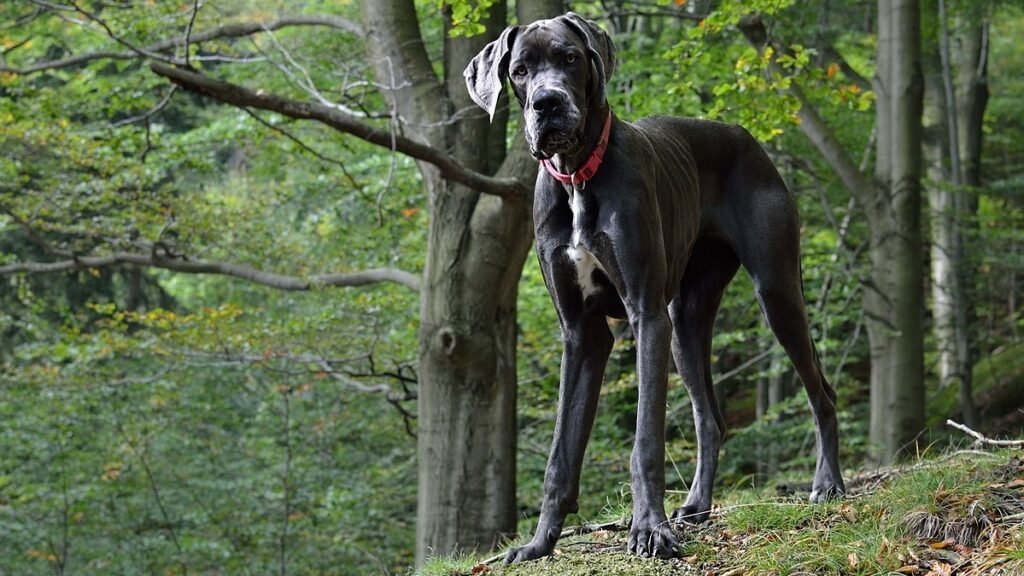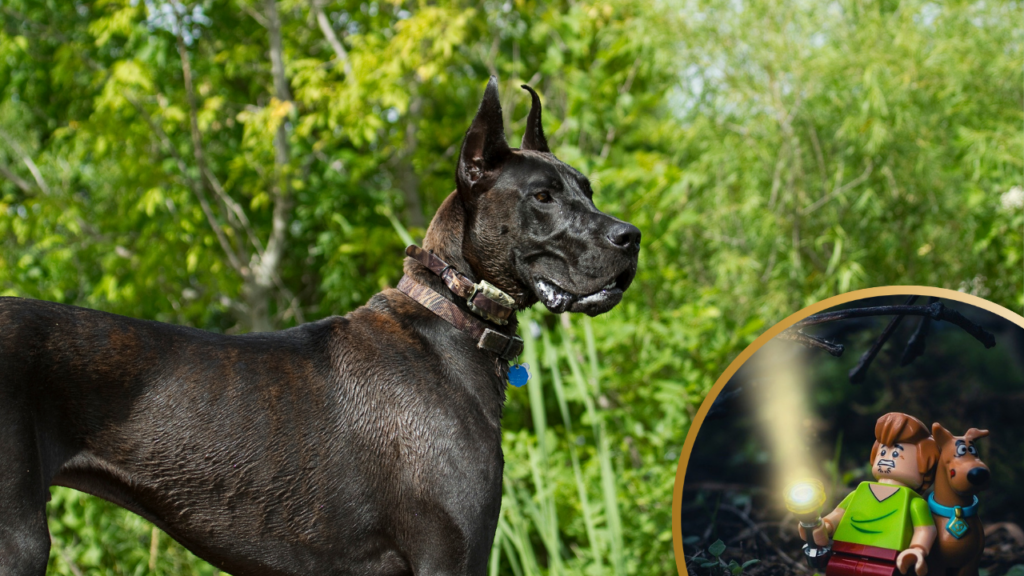Known as the “Apollo of Dogs,” the Great Dane is a gentle giant with an imposing yet friendly presence. With roots in ancient history, these regal dogs are known for their loyalty, playful nature, and striking appearance. In this article, we’ll explore everything you need to know about Great Danes—from their history and temperament to their care and quirks—offering insight into what makes this breed so unique.
Origins of the Great Dane

The Great Dane, often referred to as the “Apollo of dogs,” has a rich history dating back over 400 years. This breed is thought to have originated in Germany, where it was initially developed to hunt wild boar, using its size and strength to overpower the game. These early Great Danes, known as “Deutsche Dogges,” combined strength, speed, and a fearless nature to take down wild boars while remaining loyal to their owners. Over time, breeders refined their temperament, shifting from fierce hunters to the gentle, noble companions we admire today. The Great Dane’s name, oddly enough, comes from French travelers who mistakenly called them “Grand Danois” (Big Danish), despite their German heritage.
Though its exact lineage remains somewhat debated, the Great Dane likely descends from a mix of English Mastiff and Irish Wolfhound.
Physical Characteristics

Great Danes are known for their towering stature. Males typically stand between 30 to 34 inches tall, while females range from 28 to 32 inches. They often weigh between 100 to 200 pounds. Despite their giant size, Great Danes possess a graceful and elegant appearance, featuring a sleek, muscular body, long limbs, and a narrow head with expressive eyes and floppy ears.
Great Dane Temperament

Gentle giants at heart, Great Danes are renowned for their friendly and affectionate nature. They are generally good with children, other pets, and strangers, earning them a reputation as ideal family companions. Their temperament can be best described as calm, patient, and loyal. However, like any dog, early socialization and training are crucial to prevent any behavioral issues.
Basic Training Tips

Training a Great Dane should start early in their lives to ensure they grow into well-behaved adults. Consistency and patience are key, given their size and strength. Positive reinforcement techniques, such as treats and praise, work well. Enrolling in puppy training classes can provide them the socialization and foundation needed to become obedient companions.
Health and Lifespan

Unfortunately, Great Danes have a relatively short lifespan, averaging 7 to 10 years. They are prone to certain health issues, including hip dysplasia, heart disease, and bloat—a potentially life-threatening condition. Regular vet check-ups and a balanced diet can help mitigate some health risks. Owners should be vigilant for any signs of discomfort or illness.
Exercise and Activity Needs

Despite their imposing size, Great Danes don’t require excessive exercise. A few moderate-length walks each day typically suffice. They benefit from having sufficient space to stretch and move around comfortably. However, avoid high-impact activities, especially during their growth period, to prevent joint and bone issues.
Feeding and Nutrition

Feeding Great Danes requires a careful balance of nutrients to support their large frame and rapid growth. High-quality dog food that is formulated for large or giant breeds is recommended. Meals should be split into two or more servings a day to prevent bloat. Consulting a veterinarian for a personalized feeding plan can help ensure their dietary needs are met.
Grooming Requirements

Great Danes have short, smooth coats that require minimal grooming. Regular brushing, about once a week, helps to reduce shedding and maintain coat health. Bathing should be done as needed, typically every few months. Additionally, routine dental care, nail trimming, and ear cleaning are essential parts of keeping them in top shape.
The Great Dane in Popular Culture

Great Danes have enjoyed a prominent place in popular culture, often featured in movies, TV shows, and cartoons. Perhaps the most famous Great Dane is “Scooby-Doo,” the animated character known for his goofy antics and detective skills. Their impressive stature and gentle nature also make them popular subjects in artwork and literature.
Owning a Great Dane is a significant commitment due to their size, health needs, and lifespan. Ideal owners are those with space and time to give these dogs the care and attention they need. If you can provide a loving home, a Great Dane can be a loyal and rewarding companion, bringing joy and companionship to your life.

Andrew Alpin from India is the Brand Manager of Doggo digest. Andrew is an experienced content specialist and social media manager with a passion for writing. His forte includes health and wellness, Travel, Animals, and Nature. A nature nomad, Andrew is obsessed with mountains and loves high-altitude trekking. He has been on several Himalayan treks in India including the Everest Base Camp in Nepal.






